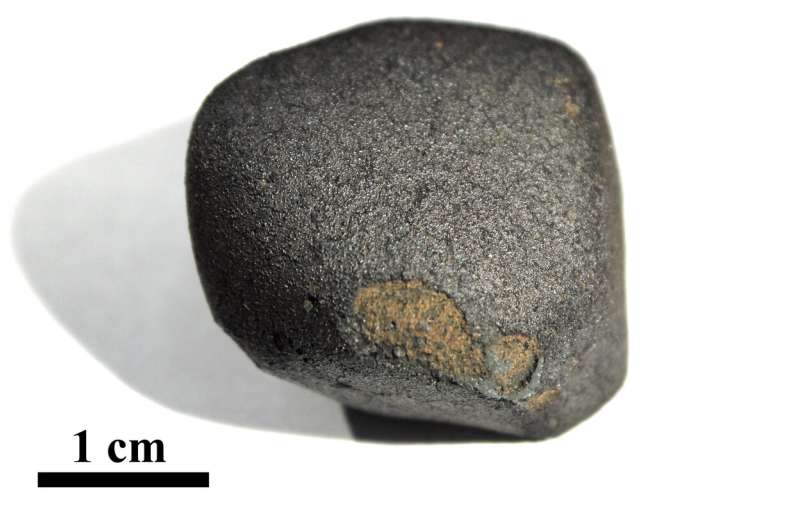Carbonates are ubiquitous rocks on Earth. They can be found in the mountain ranges of the Dolomites, the chalk cliffs on the island of Rügen, and in the coral reefs of the oceans. They remove large amounts of the greenhouse gas CO2 from the atmosphere, making them relevant for the climate. Unlike the Earth of today, there were no carbonate rocks during the formation of primordial earth, when our planet was blazing hot.
The meteorite that fell to Earth in September 2019, dubbed the Flensburg meteorite for where it was found, is classified as a carbonaceous chondrite, a very unusual and rare form of meteorite. According to Prof. Dr. Addi Bischoff and Dr. Markus Patzek from the University of Münster, the find is quite unique: "In the early solar system, the rock was extensively exposed to a watery fluid and thus formed water-bearing silicates and carbonates." The researchers from the Institute for Planetology view the meteorite as a possible building block that may have delivered water to the planet Earth early on.
The Flensburg meteorite was dated at Heidelberg University using the ion probe. "Such measurements are extraordinarily difficult and challenging, because the carbonate grains in the rock are extremely small. Further, the isotopic measurements must be very precise, taken within a very tight range of just a few micrometers in diameter—thinner than a human hair," explains Thomas Ludwig of the Institute of Earth Sciences. The dating method is based on the rates of decay of a naturally occurring isotope—the decay of the short-lived radionuclide 53Mn, which was still active in the early solar system.
"Using this method, the most precise age determinations thus far indicated that the parent asteroid of the Flensburg meteorite and the carbonates formed only three million years after the formation of the first solid bodies in the solar system," explains Prof. Trieloff. The carbonates are therefore more than a million years older than comparable carbonates in other types of carbonaceous chondrites. Besides the age determinations based on the radionuclide 53Mn, the tiny carbonate grains were also examined for their carbon and oxygen isotope composition with the aid of the Heidelberg Ion Probe. The carbonates apparently precipitated out of a relatively hot fluid shortly after the formation and heating of the parent asteroid. "They therefore evidence the earliest known presence of liquid water on a planetary body in the early solar system," states the cosmochemist.



